Recently a reader of this blog left a comment on an earlier post about Stan Galli. The reader very kindly provided a link to what is, in my opinion, a most remarkable and invaluable resource - one I was completely unaware of; an online transcript of a series of interviews with Stan Galli conducted in 2002 by Susan B. Riess.
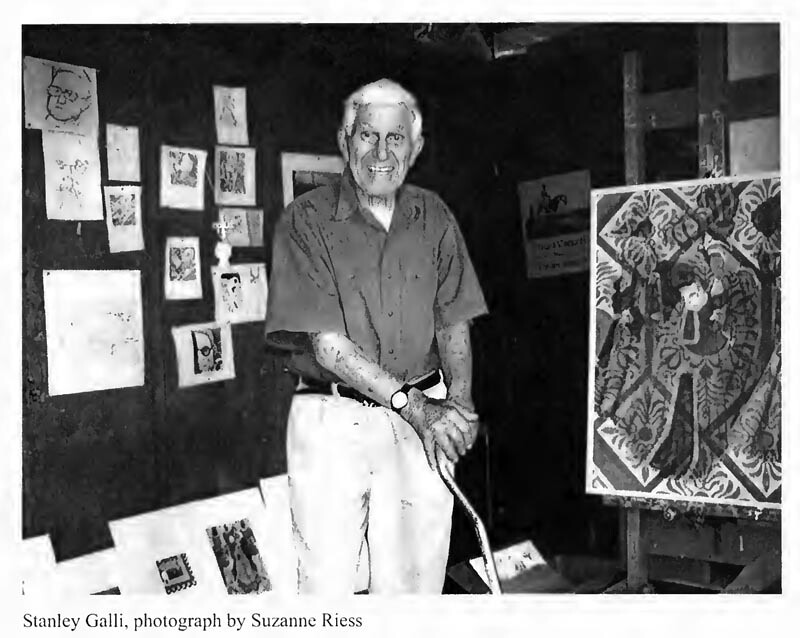
Entitled, "Solving Visual Problems - An Artist's Life," this transcript contains an astonishing amount of detailed, anecdotal information about Stan Galli's experiences over the course of his many decades as a top professional illustrator. With the exception of Norman Rockwell's autobiography, "My Adventures as an Illustrator," I doubt we have ever seen any other first-hand account of a mid-20th century illustrator's life that is as thorough and intimate as this one.
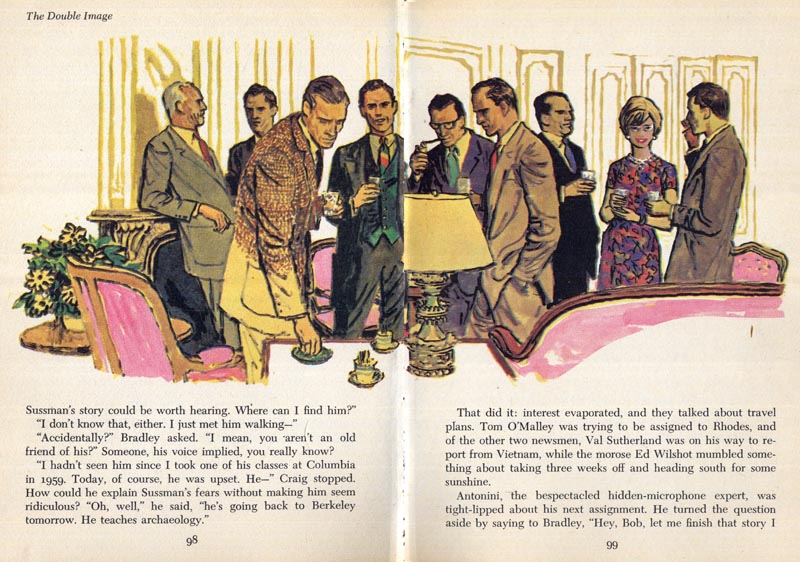
If you have as avid an interest in learning about the illustration field during the decades of the mid-20th century as I do, you will definitely want to read this book (it's available for free and in a wide variety of formats or can be read online).
Here's a brief but fascinating excert:
Specifics on Post Assignments
Riess: Now,to how it worked when you got your assignments.You've told me that the Saturday Evening Post would send you stories and I'd like to know how that kind of transaction would take place. Would they call you first?
Galli: Yes they would. They'd call and say, "Look, we have a story here. Can you do it?" I'd say, "Of course, with enough time to do it." That's all. It was one person, Frank Kilker, that I dealt with.
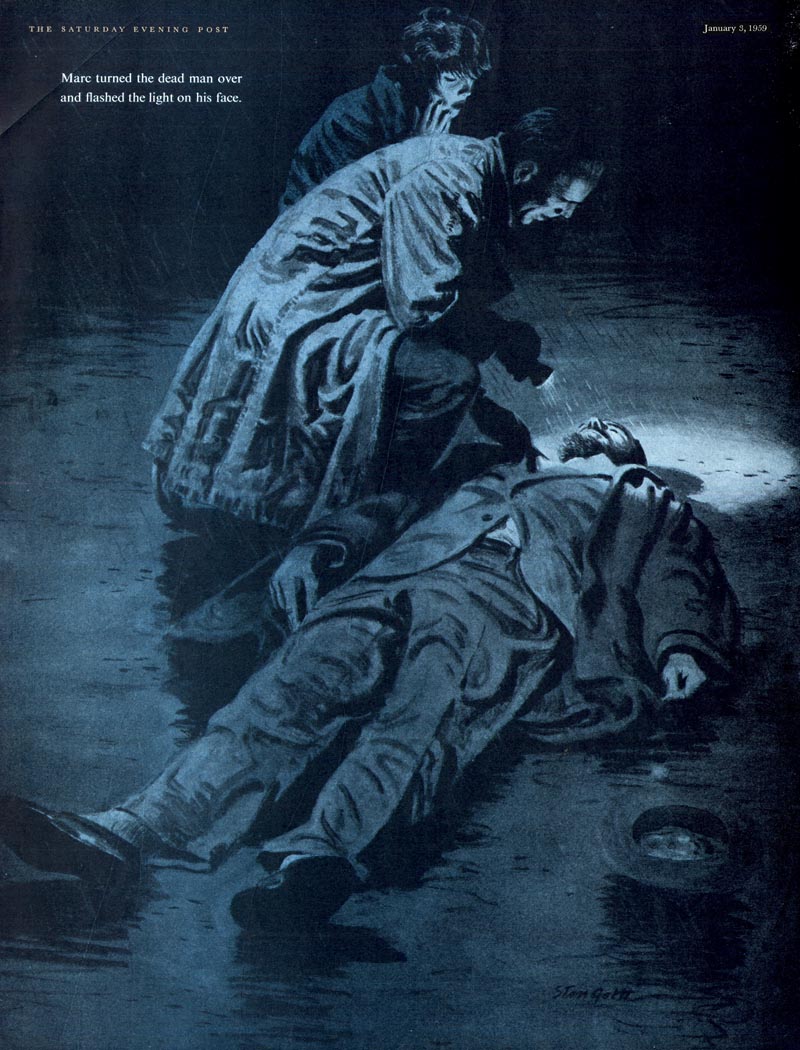
Riess: Did they send you suggestions for what part of the story to illustrate?
Galli: Yes they did and I always ignored them. They took my suggestions because, as I say, I was a visual problem solver.
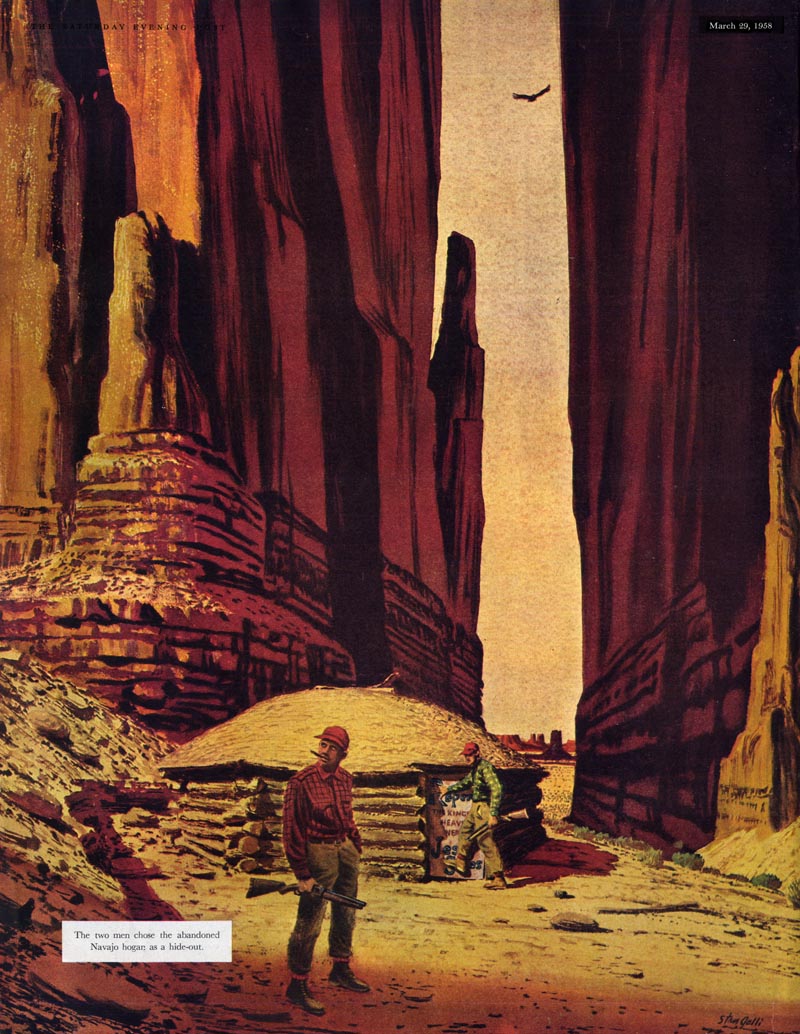
I would send them a rough sketch of what I wanted to do, several sketches. I'd analyze the story and figure out, because the function of an illustration is to stop somebody in their looking through the magazine, and get them interested. So the illustration has to do something like that.
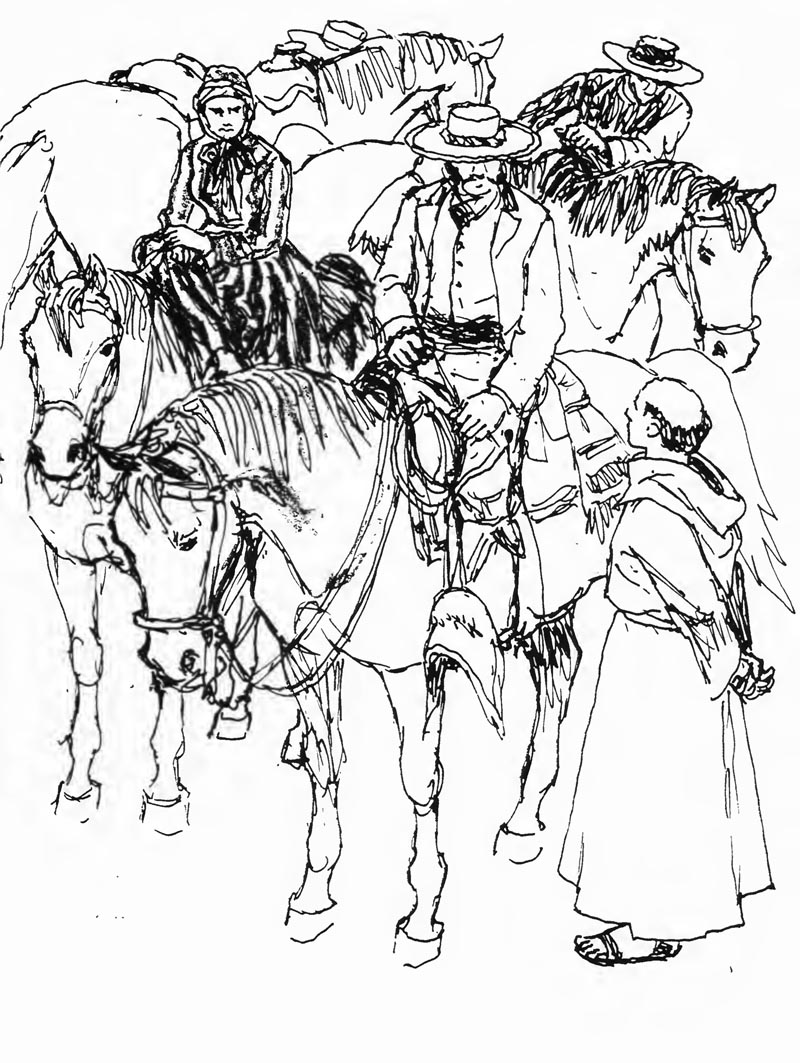
Riess: Would there be more than one illustration?
Galli: It would be one illustration for a story, but then I'd get a serial, which would be multiple, starting in the first pages of the Post with an illustration for the serial and then some subsequent ones. And that was a big assignment.
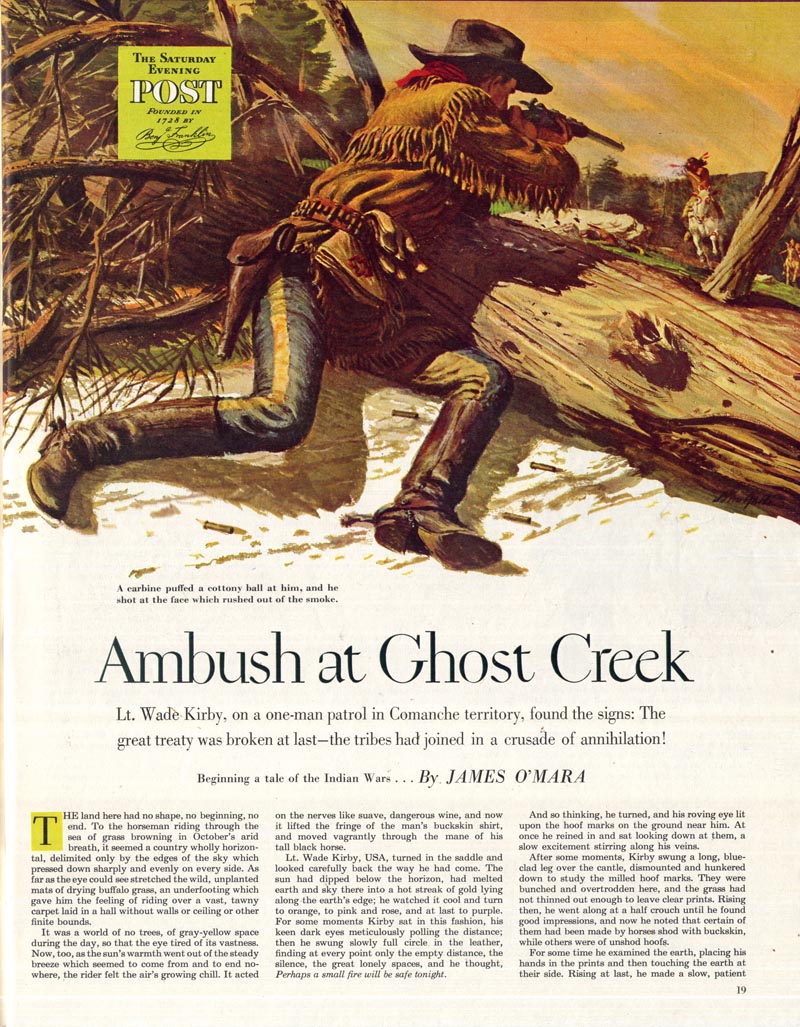
Galli: You had to plot the whole thing out, had to go through that whole story and segment it and illustrate all those parts that were going to run, each part.
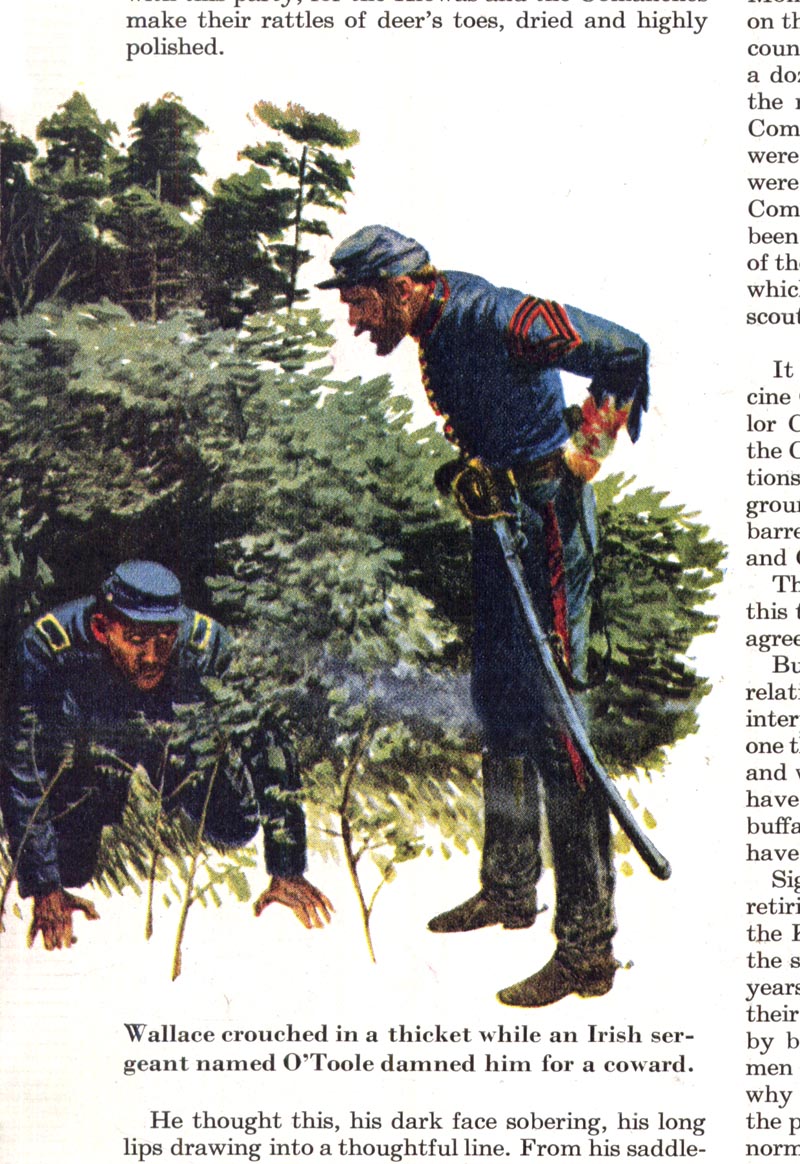
Riess: As you were working on it would you call back to New York and talk it through?
Galli: No, I would just make the roughs. If I had a question I would call, if there was something in the story that I didn't understand. That was rare.
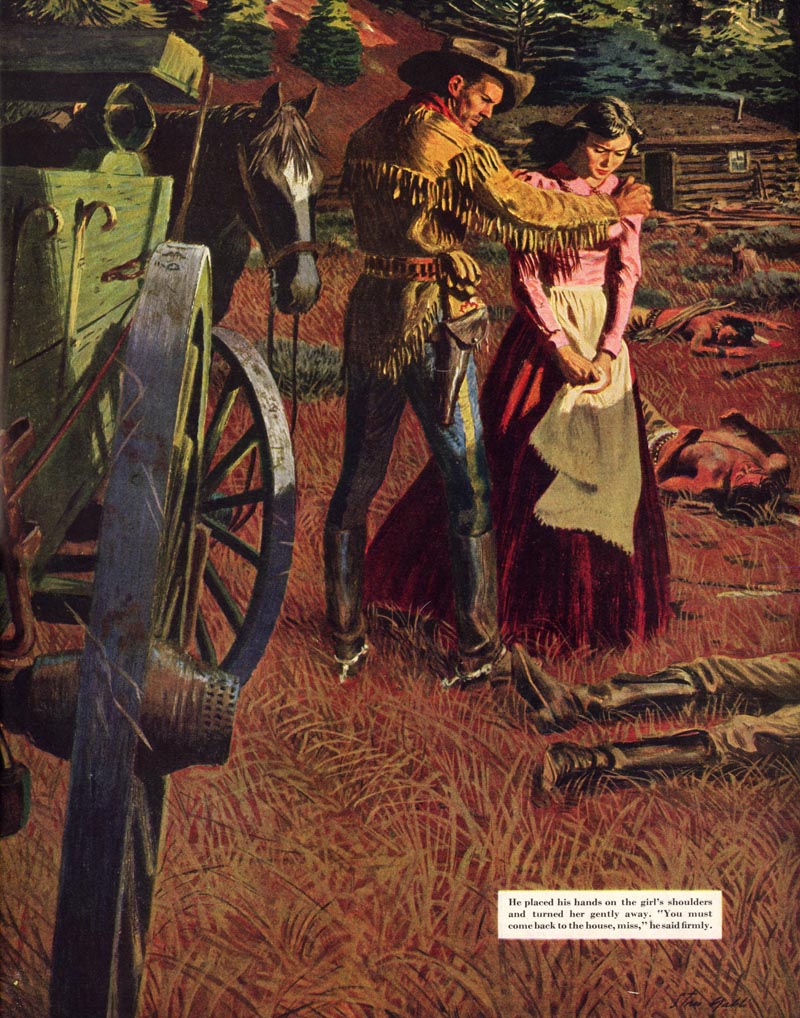
Riess: I remember the "Tugboat Annie" and "Hornblower" stories in the Post. Did you do any of those?
Galli: I didn't do any of those - well, towards the end I did a "Hornblower" story when the person who did the "Hornblower" series died, I guess. Then I did one or two stories, that's all.
Riess: Do you remember particular authors that you were assigned?
Galli: I did Eugene Burdick's The Ugly American.
Riess: That was initially in the Post? What did you illustrate?
Galli: The first part was the "ugly American," the ambassador, sitting in his office in Saigon, looking out on the street. And you made it very obvious that it [the location] was oriental.
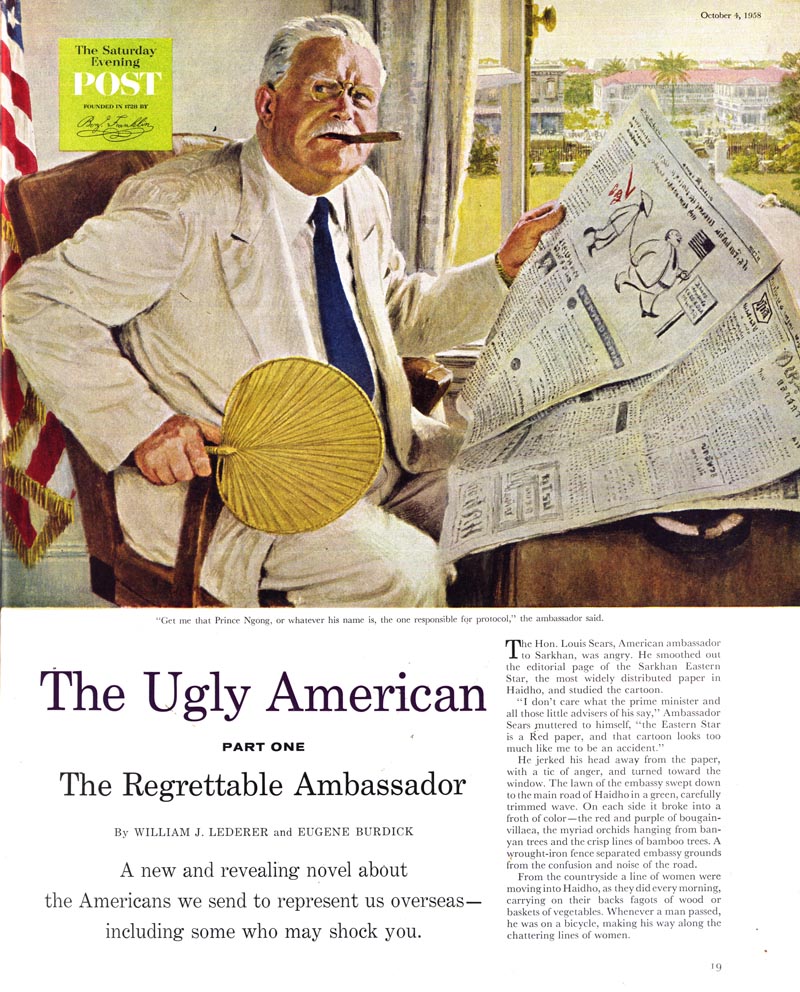
Galli: He's reading a newspaper that has this cartoon of him on it, you know, as the ugly American.

Galli: I had to get a model for that and he had to be pretty stout.
Well, I was living out in Inverness -- we had a summerhouse out in Inverness at the time. Virginia Merrill was a friend of mine, and I asked her if she knew somebody that could act [pose] as an ambassador that was pretty roly poly. She said, "Oh yes, the perfect one." She had a neighbour, and God he was the perfect one! Herb Caen wrote about him and poked fun at him because he was the clown of Montgomery Street. I can't remember his name.
Riess: Did you pose him or did you just take a photograph of him?
Galli: I took a photograph of him, but then I fiddled around with it and accentuated the un-positive.
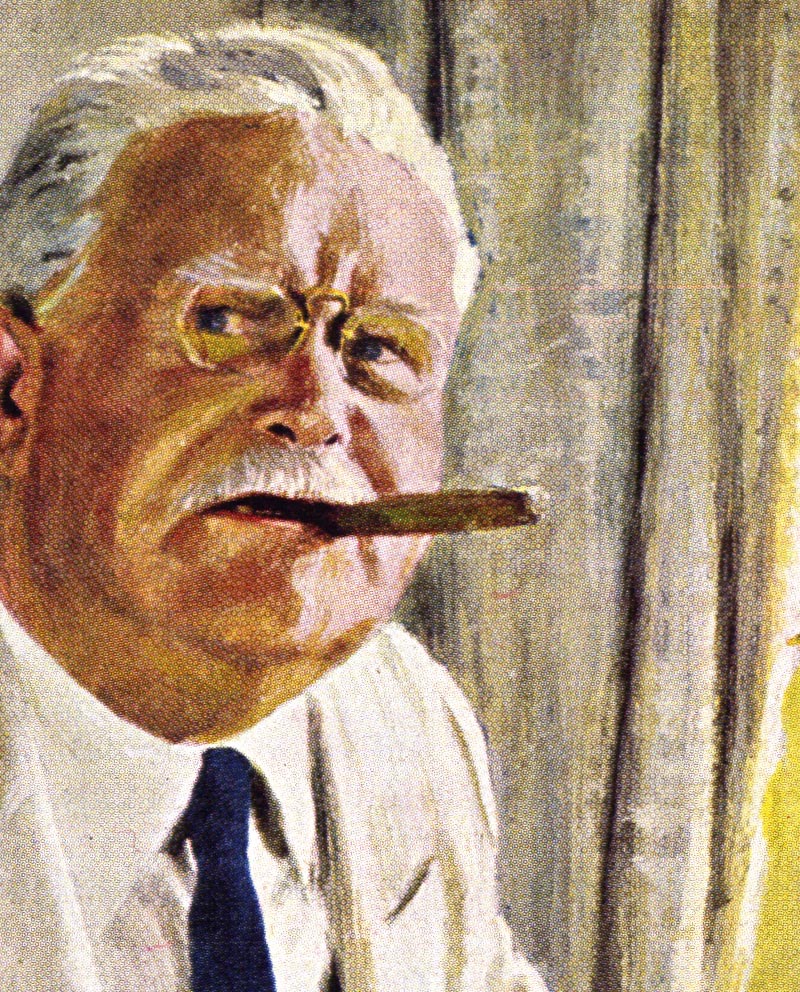
Maybe I could dig out the tear sheets on that -- gee whiz, I've got a lot of work cut out for me.
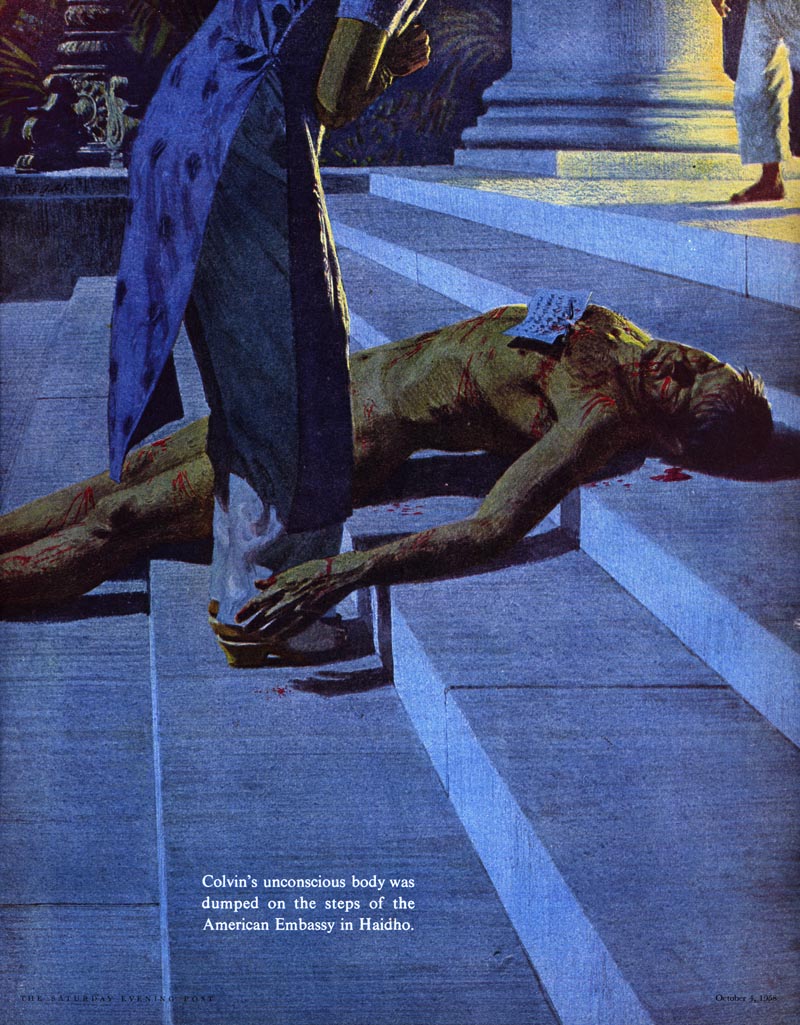
Riess: And McCall's?
Galli: They were all women's stories, of course. That was fun for me to work on. I enjoyed that a lot.
(Below, Galli illustration from McCall's, December 1960)
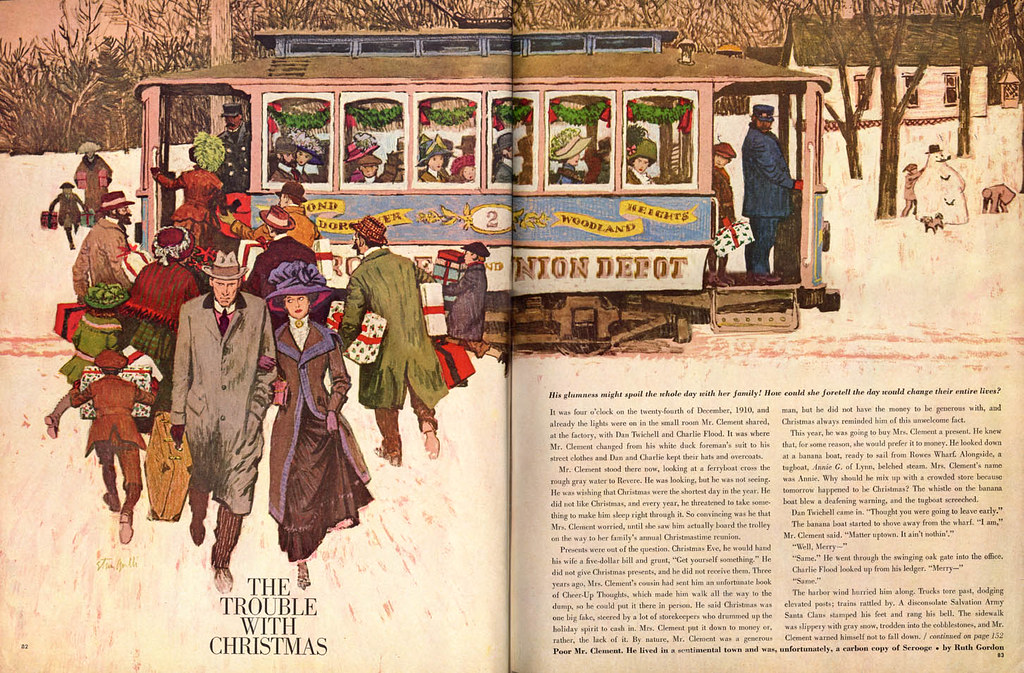
Riess: How was the relationship handled with them?
Galli: The same. The editor would call me up. She's the one who got me to do it. She had worked for Today's Woman at one time and I had done some stories for her and she figured me a problem solver.
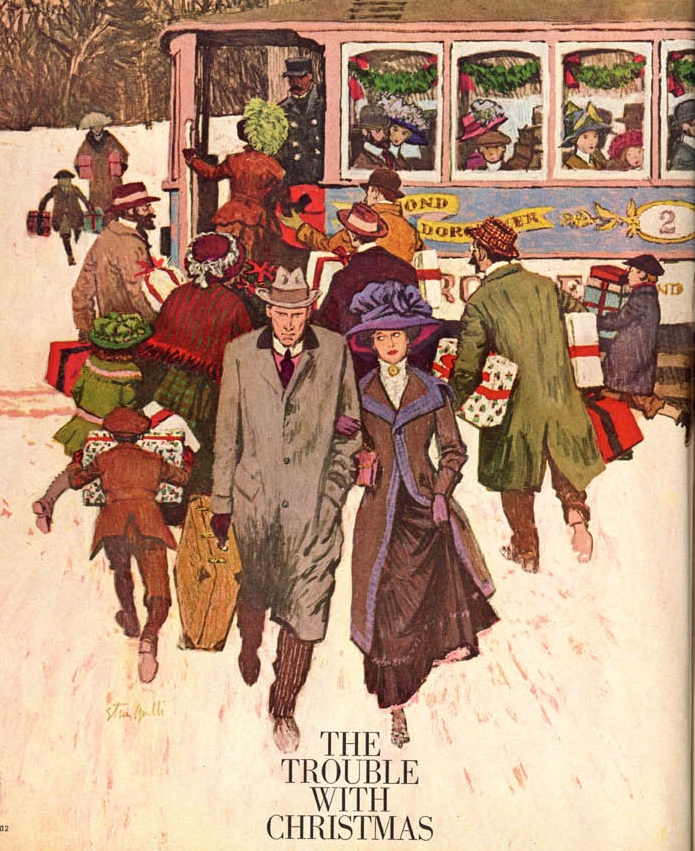
Riess: Saturday Evening Post had the greatest prestige, really.
Galli: Well, I suppose, yes. I considered them all important, every one.
Riess: How would a person get to do a Post cover?
Galli: God, I don't know. Ken Stuart was the head art director for the Saturday Evening Post, but I used to avoid him - I'd bypass his office and go right into Frank Kilker's office. It was Frank Kilker I worked for. Ken Stuart just struck me as a difficult person. You know how you sense that.
Riess: Why was it, do you think?
Galli: Well, I don't know. He went to work for the Reader Digest after the Post folded, and he got me on the Digest.
(Below, Galli illustrations from Reader's Digest Condensed Books, 1965)
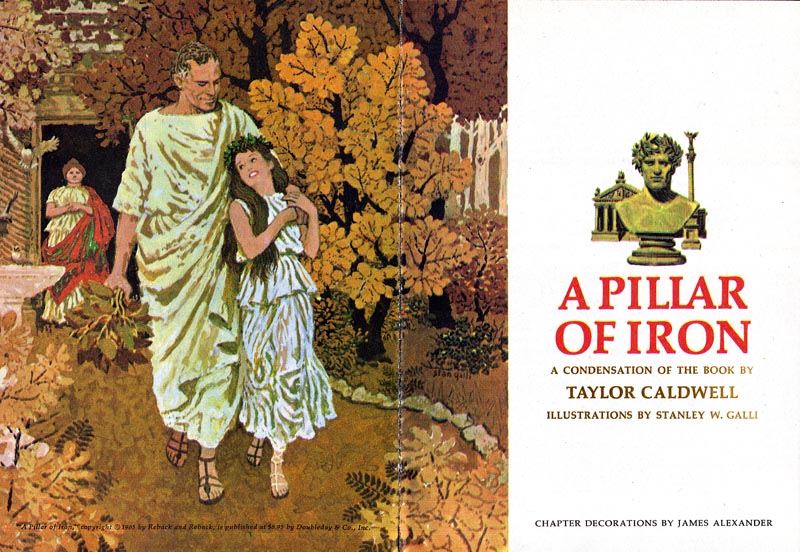
Riess: By being out here [California] you didn't have too much contact.
Galli: I didn't have too much contact at all, only with people I liked.
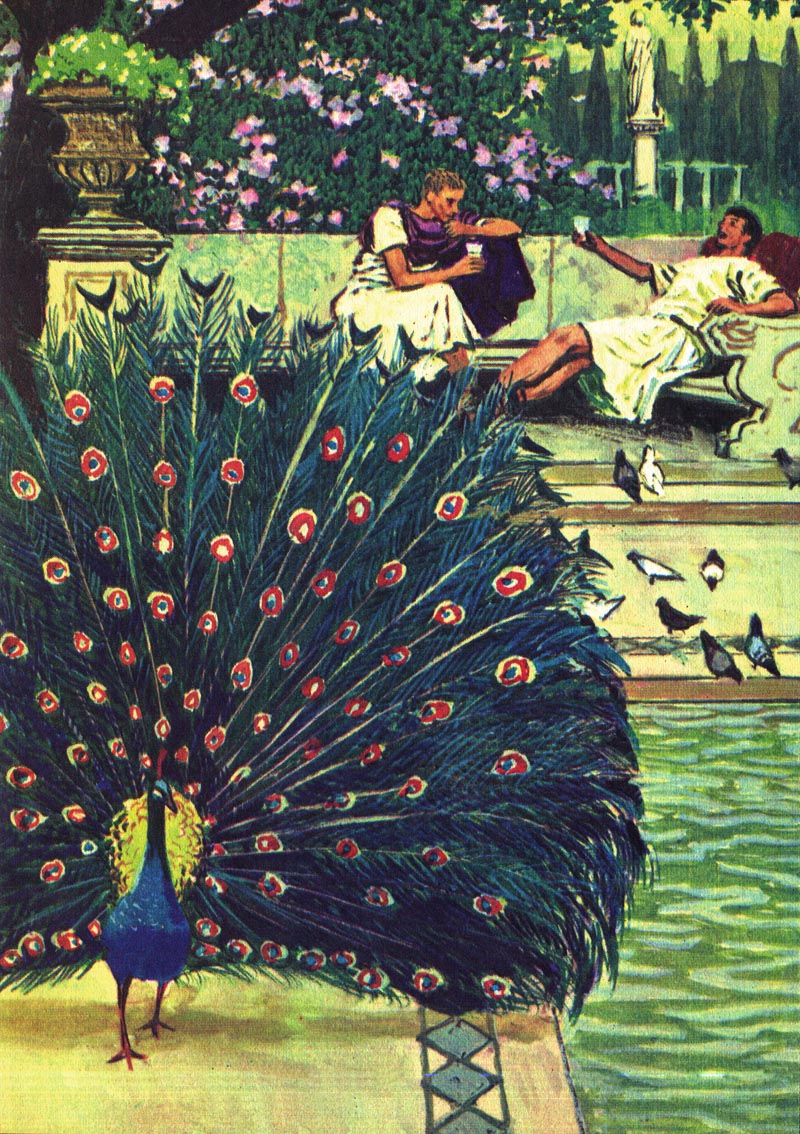
Riess: If you were working with the Post, did the art editors want to have someone exclusively, so that they wouldn't want you to work for McCall's?
Galli: You couldn't work for Collier's. That was the competition. That was a no-no. I didn't particularly want to either.

Riess: You still have the Post illustrations?
Galli: Yes. They just bought the reproduction rights and they'd send them [the original illustrations] back. I burned them up. I couldn't stand looking at them.
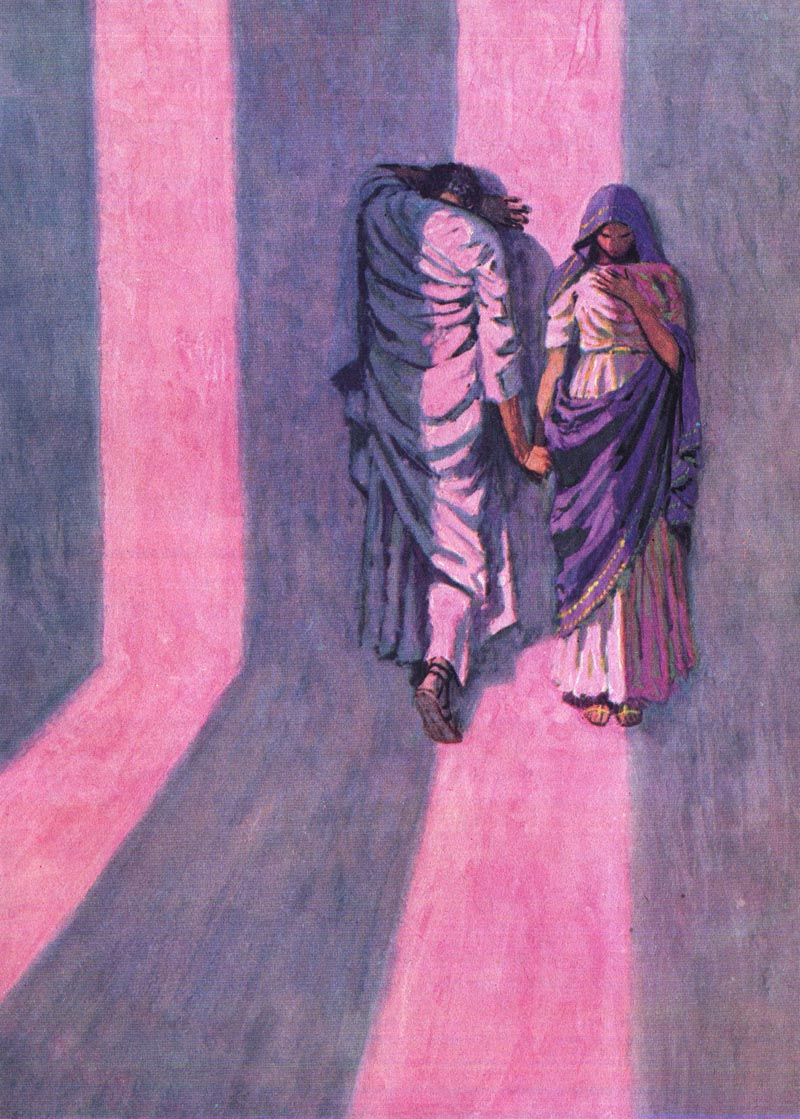
Riess: When?
Galli: When they came back. We had a barbecue out there, and I burned them up.
* You can read the entire text of "Solving Visual Problems - An Artist's Life," (or download it) from The University of California's Internet Archive









Post a Comment